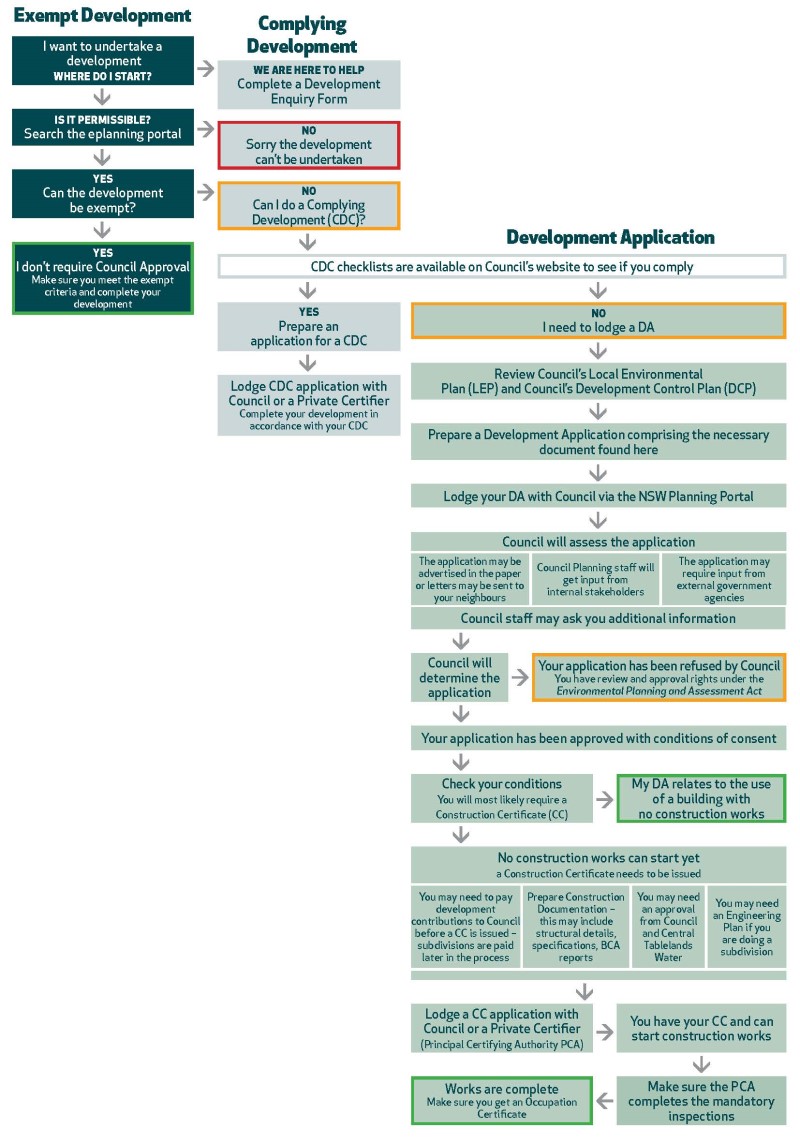What Type of Approval Do I Need?
Within Blayney Shire, depending on the type of development. Many types of minor home renovations and small building projects such as the erection of a carport or garden shed don't need a planning or building approval. These types of projects are called exempt development. As long as the building project meets specific development standards and land requirements, no planning approval is needed.
Other straightforward, low impact residential, commercial and industrial developments that do require planning approval may qualify for a fast-track approval process known as complying development. If the application meets specific standards and land requirements a Complying Development Certificate (CDC) can be obtained through your local Council or an accredited certifier without the need for a full development application.
Notwithstanding, many types of development require a combination of the below approvals. If you are unsure what you need to apply for, feel free to fill out a pre-planning enquiry to get tailored advice regarding planning controls within our Shire and the types of approvals you will require for your development.

Last modified:
24 Oct 2023